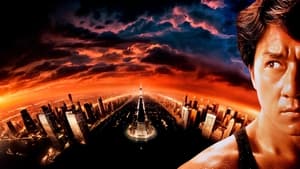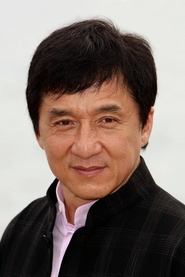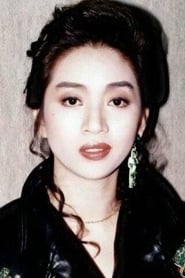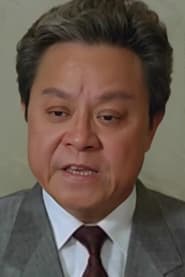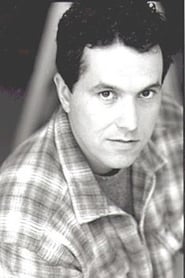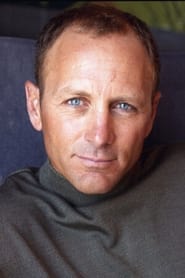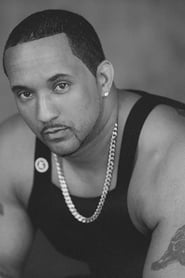Cast
View AllJackie Chan
as Keung
Anita Mui
as Elaine
Françoise Yip
as Nancy
Bill Tung Biu
as Uncle Bill
Marc Akerstream
as Tony
Garvin Cross
as Angelo
Morgan Lam
as Danny
Ailen Sit Chun-Wai
as Tony's Gang Member
Chan Man-Ching
as Tony's Gang Member
Fred Andrucci
as Tony's Gang Member
Mark Antoniuk
as Tony's Gang Member
Lauro David Chartrand-DelValle
as Tony's Gang Member
Chris Franco
as Tony's Gang Member
Lance Gibson
as Tony's Gang Member
David Hooper
as Tony's Gang Member
Crew
Director
- Stanley Tong Gwai-Lai
Writer
- Fibe Ma Mei-Ping
- Edward Tang
Producer
- Barbie Tung Wan-Si
Reviews
Filipe Manuel Neto
**Sympathetic humor and impressive beatings in a very poorly made film, which entertains its audience.**
Although I know the actor from other movies, this was the first Jackie Chan movie I saw. He brings to life a friendly young man from Hong Kong who comes to the USA for his uncle's wedding, who has lived in the Bronx, New York, for many years. During his stay, he will see his uncle sell his shop in order to retire and spend his old age on a ranch, and he will also have to face a biker gang and a mafia organization that has lost a bag of diamonds that end up in the power of the character played by Chan. Of course, it's all going to end up in a beating.
The film is quite good at its simple and direct task of entertaining the audience. There's a nice, well-measured mix of humor and action. The jokes are quite naive, but they work and give the film a familiar and friendly touch that is pleasant without turning it into a tear-jerking comedy. The fight scenes are the strong point, and it is worth seeing the highly choreographed fights that Chan fights with ten or twenty opponents simultaneously, and in which he uses all his knowledge of martial arts. However, let's not have any illusions: the film shows the fight scenes a little faster than in reality, which amplifies the effect, but takes away the verisimilitude of what we are seeing.
Chan is likeable and perhaps one of the most palatable actors in the vast universe of stars whose careers were based on thuggish films (Van Damme, Chuck Norris and others). He deserves a good grade, both for his acting and for his fight scenes. Unfortunately, he's the only actor worth mentioning because the others are all pretty amateurish. But let no one think that Chan gives us a lesson in acting! He does what he's supposed to do: be funny and kick ass. It's Jackie Chan, not Lawrence Olivier. Anita Mui and Françoise Yip are here simply because the film needed some pretty faces.
The script is quite weak, a mere excuse for high doses of comedy and beatings for all tastes. The poverty of the script is such that, halfway through the film, we already forget the names of the characters and why Chan came to the US. These are questions that we soon feel are irrelevant (or rather, that were considered irrelevant in this film). The villains are really weak - the mobsters look scared, and the biker gang is ridiculous. However, all of this is relatively forgivable when we think of the poor editing work that went into this film. The cuts couldn't be more obvious and misplaced. There are scenes that seem to be inserted with a hammer, others appear suddenly, or end suddenly, just like the film itself, which ends so suddenly that it feels like an episode of a TV series and not a film for the cinema.
Apr 23, 2023
Thematic Analysis
This high-octane Crime/Action/Comedy/Thriller film balances spectacular sequences with character-driven moments. Unlike many films in the genre, Rumble in the Bronx distinguishes itself through a unique visual style and creative action choreography.
Director Stanley Tong Gwai-Lai brings their distinctive visual style to this film, continuing their exploration of themes seen in their previous works while adding new elements. Their approach to pacing and visual storytelling creates a viewing experience that rewards close attention.
Released in 1995, the film exists within a cultural context that now offers viewers historical perspective on the social issues of that era. Its reception demonstrates the diverse reactions to its artistic choices and its place in cinema history.
Did You Know?
- The production of Rumble in the Bronx took approximately 11 months from pre-production to final cut.
- With a budget of $7.5 million, the film proved to be a financial success, earning back its investment and more.
- The final cut of the film runs for 106 minutes, though the director's initial assembly was reportedly 150 minutes long.
- The film contains approximately 2488 individual shots.
- The musical score contains over 59 unique compositions.
- Several scenes were filmed in multiple locations to capture the perfect setting.
Historical Context
- In 1995, when this film was released:
- The end of the Cold War was reshaping global politics.
- Digital technology was transforming the entertainment industry.
- Independent cinema was growing in influence, challenging the dominance of major studios.
How This Film Stands Out
While Rumble in the Bronx shares thematic elements with other films in its genre, it distinguishes itself through its unique approach to storytelling, visual style, and character development.
Unlike Happy Partner, which takes a more conventional approach to its subject matter, Rumble in the Bronx subverts genre expectations by exploring its themes with greater nuance.
While films like Things to Do in Denver When You're Dead and Short Sharp Shock explore similar territory, Rumble in the Bronx stands apart through its distinctive directorial vision and pacing.
This film's unique contribution to cinema lies in its thoughtful balance of entertainment value and thematic depth, making it a valuable addition to its genre.
Details
- Release Date: January 21, 1995
- Runtime: 1h 46m
- Budget: $7,500,000
- Revenue: $76,028,558
